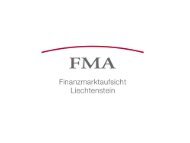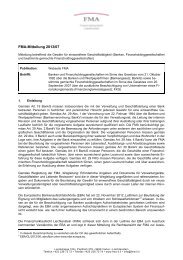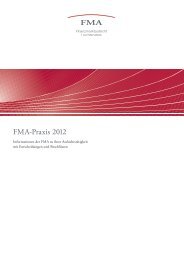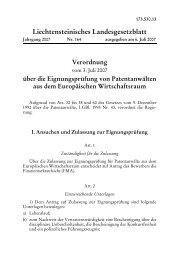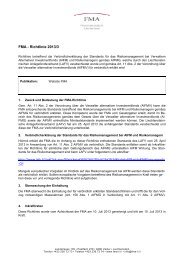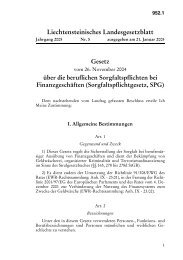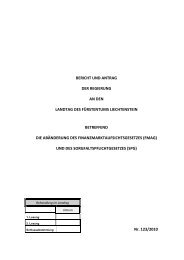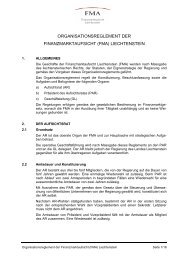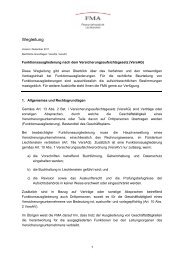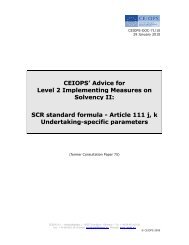CEIOPS' Advice for Level 2 Implementing ... - EIOPA - Europa
CEIOPS' Advice for Level 2 Implementing ... - EIOPA - Europa
CEIOPS' Advice for Level 2 Implementing ... - EIOPA - Europa
Create successful ePaper yourself
Turn your PDF publications into a flip-book with our unique Google optimized e-Paper software.
3.193 The time value of the investment guarantee shows the expected amount<br />
that should be held in addition to the underlying assets to be able to<br />
deliver the benefits due to the investment guarantee. In the call option<br />
approach the IntrinsicV alueOfExtraBenefits<br />
corresponds to the amount the<br />
call option is in-the-money if it would be exercised immediately and the<br />
OptionTime Value captures the potential to receive further extra benefits<br />
in the future due to the random fluctuations of the underlying assets. In<br />
the put option approach the IntrinsicV alueOfGuarantee<br />
corresponds to the<br />
amount the guarantee is in-the-money if it would be exercised<br />
immediately and the OptionTime Value captures the potential <strong>for</strong> the cost<br />
to change in value (guarantee to bite further) in the future, as the<br />
guarantee move (related to the variability of the underlying assets) into<br />
or out-of-the-money.<br />
3.194 Introducing management actions and discretion into the valuation<br />
complicate valuation considerable. In practice past investment returns,<br />
decisions and especially the solvency position of the undertaking will<br />
usually have a significant impact on the management actions and<br />
decisions and create complex path-dependent processes not suitable <strong>for</strong><br />
closed-<strong>for</strong>m modelling.<br />
3.195 The non-exhaustive list of possible simplifications <strong>for</strong> calculating the<br />
values of investment guarantees includes:<br />
• assume non-path dependency in relation to management actions,<br />
regular premiums, cost deductions (e.g., management charges,...),<br />
• use representative deterministic assumptions of the possible<br />
outcomes <strong>for</strong> determining the intrinsic values of extra benefits,<br />
• assume deterministic scenarios <strong>for</strong> future premiums (when<br />
applicable), mortality rates, expenses, surrender rates, ...,<br />
• apply <strong>for</strong>mulaic simplified approach <strong>for</strong> the time values if they are not<br />
considered to be material.<br />
3.2.2.5. Other options and guarantees<br />
3.196 Life insurance contracts may include different types of options and<br />
guarantees. There<strong>for</strong>e it is rather impossible to give detailed valuation<br />
approaches that would be suitable <strong>for</strong> all possible options and<br />
guarantees.<br />
3.197 With regard to principle of proportionality as an interim approach one<br />
could ignore those options and guarantees which are not material (e.g.,<br />
it could be assumed that options with low probability of being exercise –<br />
heavily out of the money - and with low impact if exercised do not exist<br />
at all).<br />
3.198 However some of them could be valued with similar techniques as those<br />
<strong>for</strong> the surrender option and some of them can be valued with similar<br />
techniques as those <strong>for</strong> the investment guarantee.<br />
3.199 Where the surrender options valuation approach or similar techniques as<br />
those <strong>for</strong> the investment guarantee cannot be sensibly applied <strong>for</strong> the<br />
valuation of particular type of option or guarantee a last resort <strong>for</strong> those<br />
would be a subjective ad hoc valuation.<br />
43/112<br />
© CEIOPS 2010



